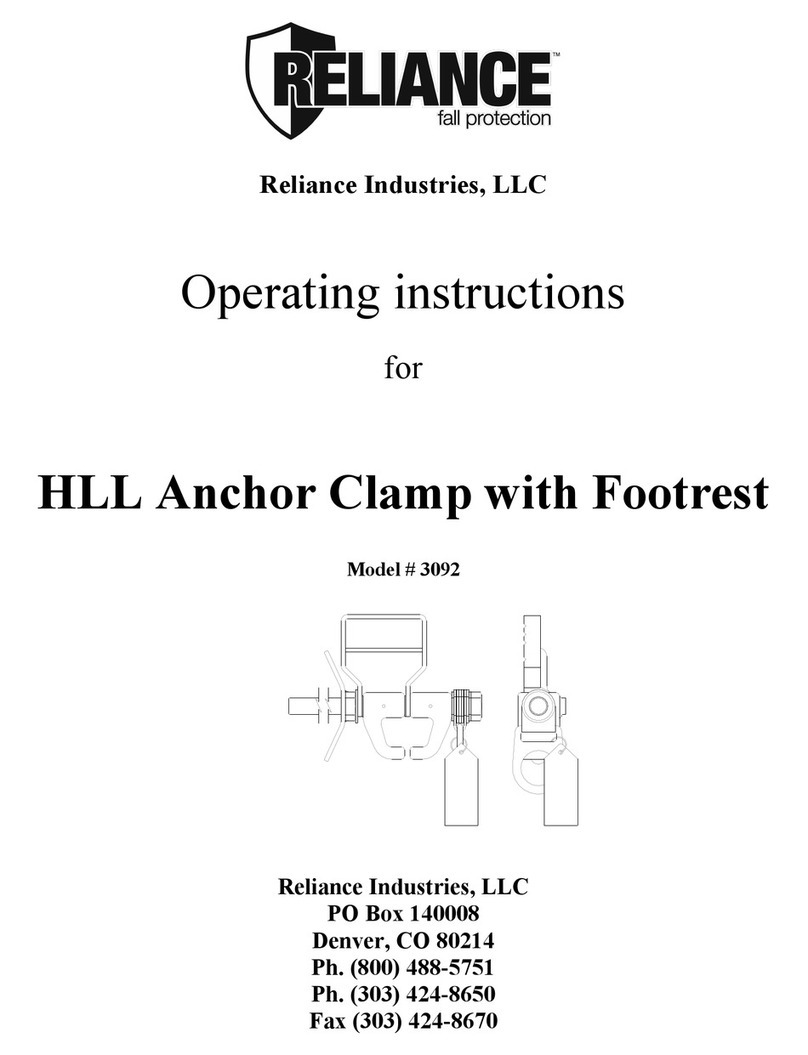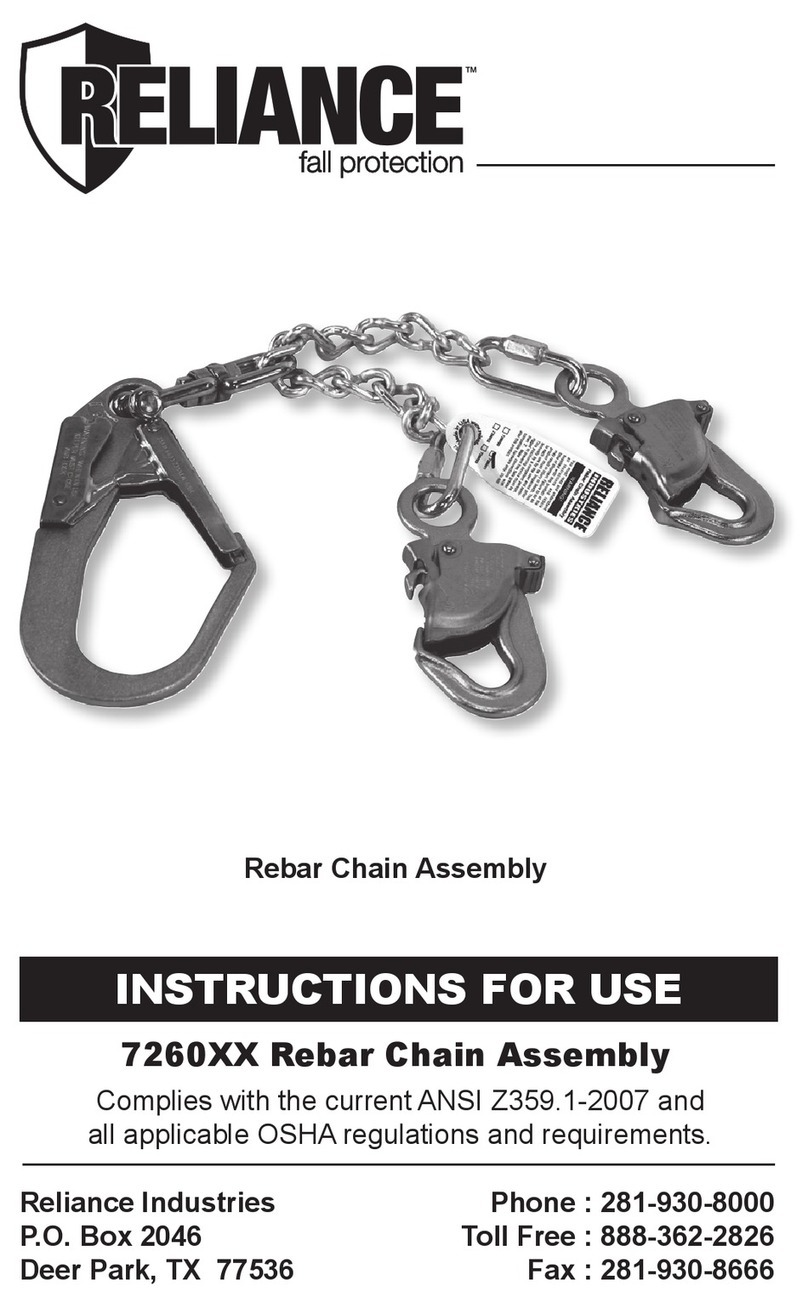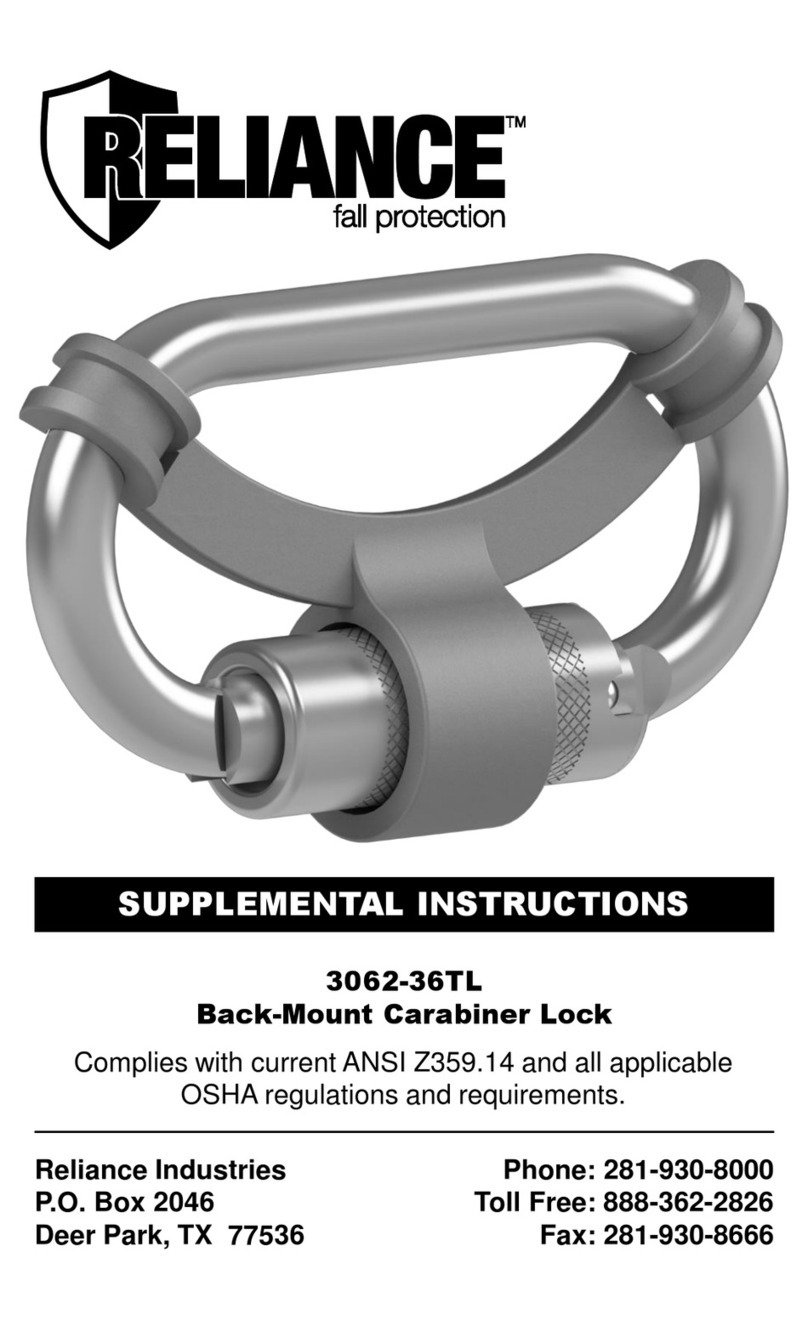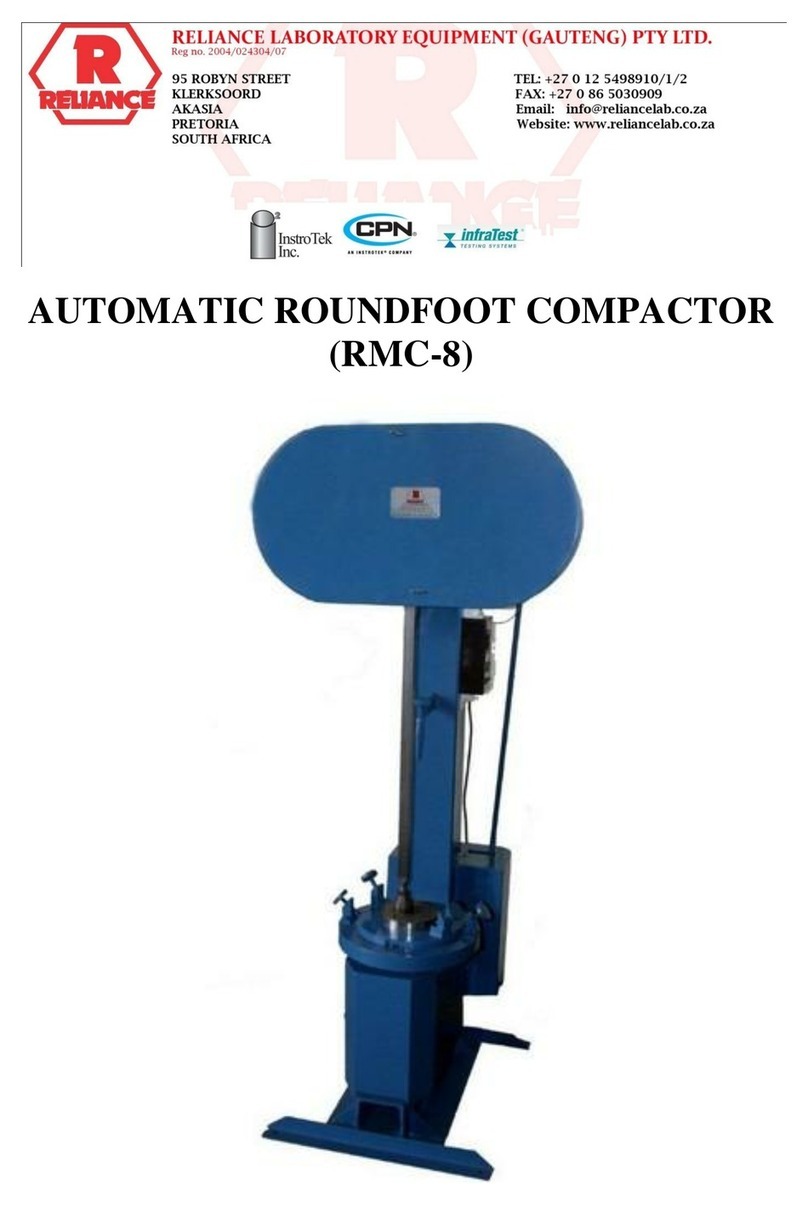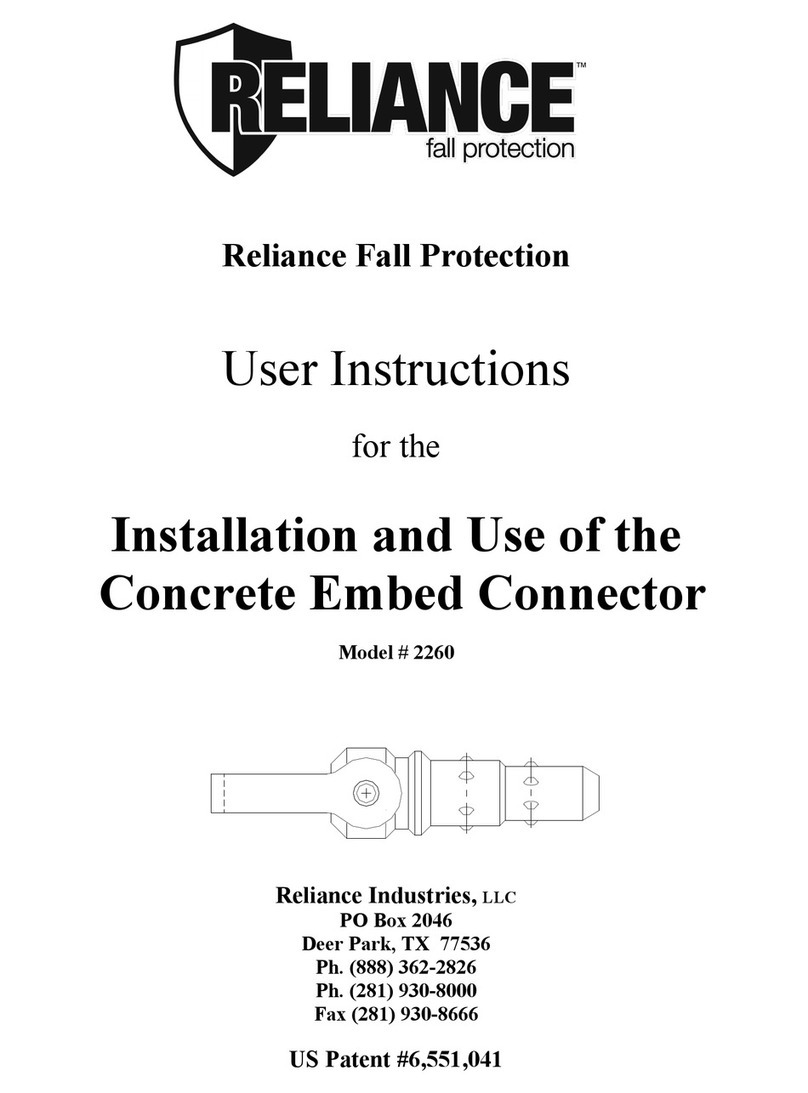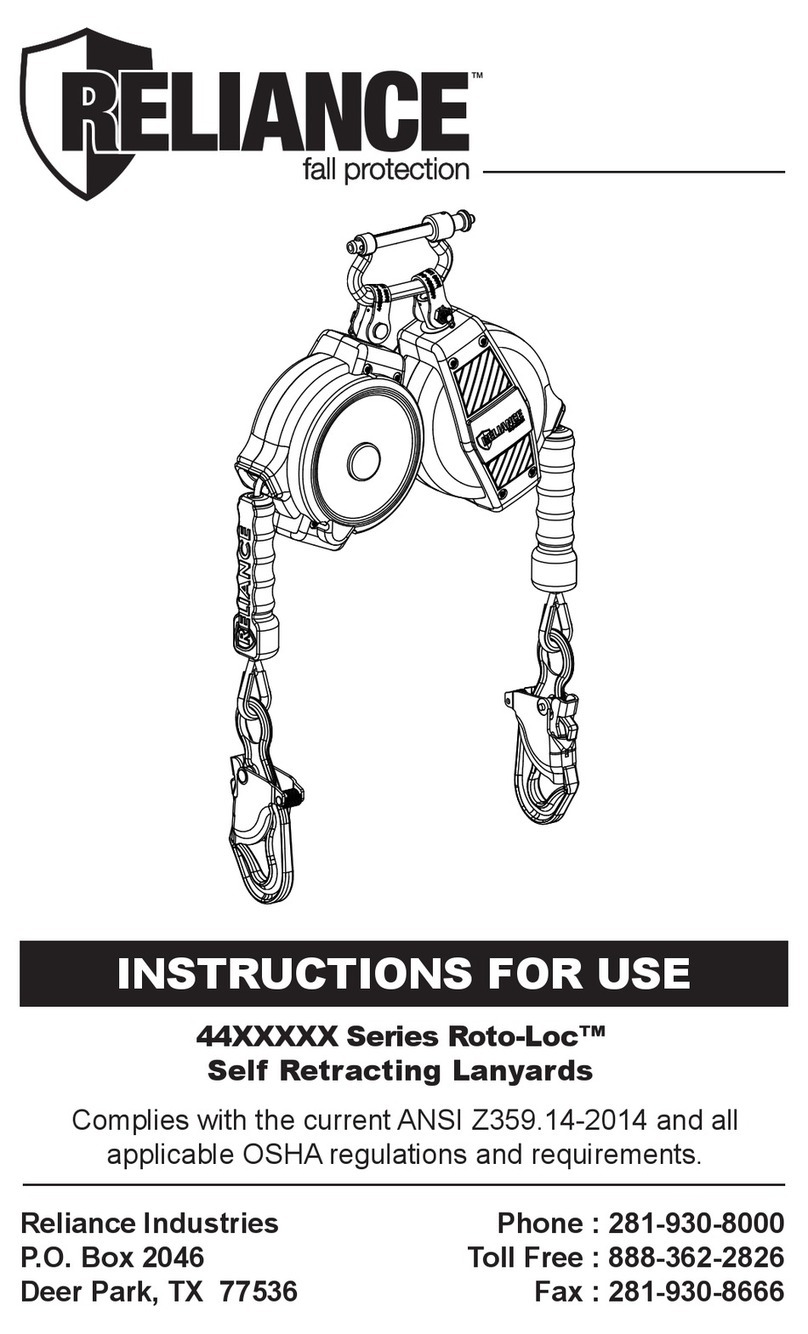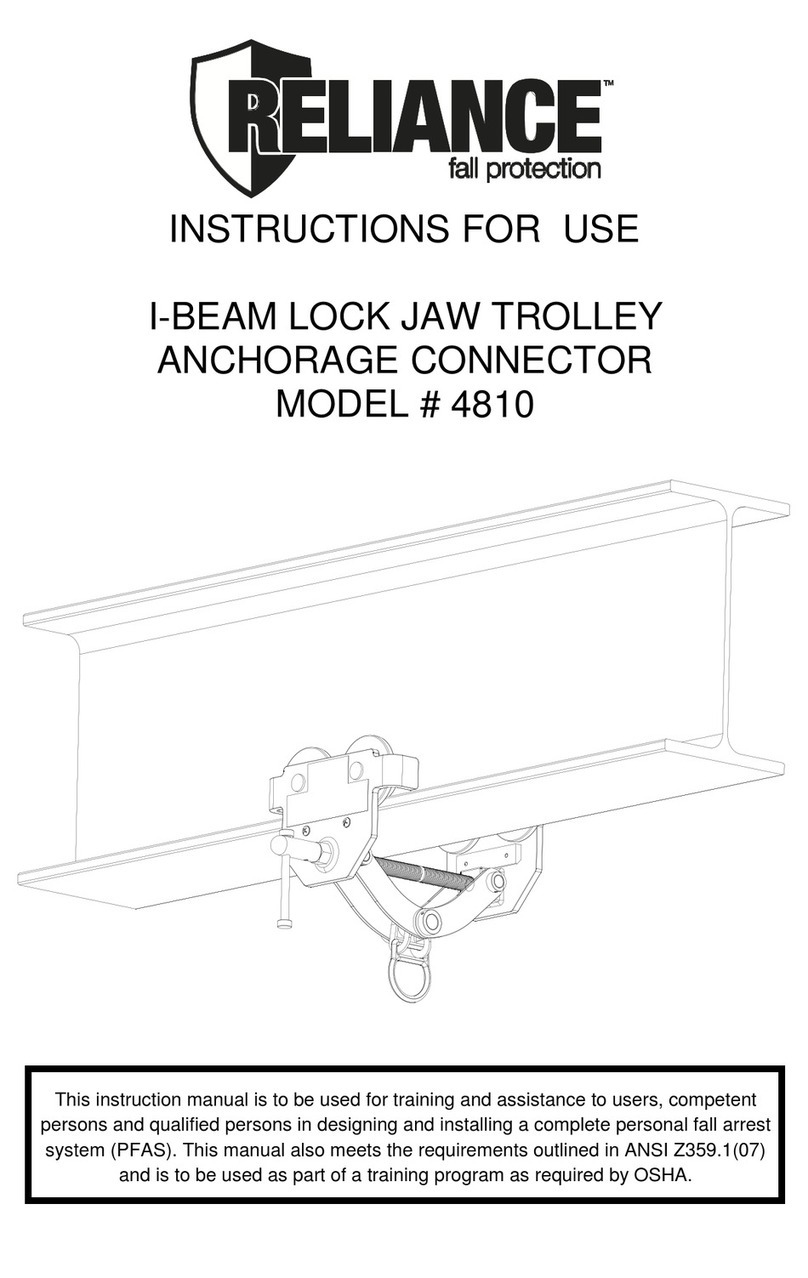
Instructions for Use
Page 7
application (e.g. fall arrest or restraint). RELIANCE produces a line
of connecting subsystems for most applications. Contact RELIANCE
for further information. Refer to the manufacturer’s instructions
supplied with the component or connecting subsystem to determine
suitability. For fall arrest applications using the anchor sling, the
maximum fall arrest force must not exceed 1,800 lbs. (8 kN). Contact
RELIANCE with any questions regarding compatibility of equipment
used with the Harness.
2) COMPATIBILITY OF CONNECTORS
Connectors, such as D-rings, snap hooks, and carabiners, must be
rated at 5,000 lbf. (22 kN) minimum breaking strength. RELIANCE
connectors meet this requirement. Connecting hardware must be
compatible in size, shape, and strength. Non-compatible connectors
may accidentally disengage (“rollout”) or false engage. Always verify
that the connecting snap hook or carabiner and the D-ring on the
anchorage connector is compatible. Use only self-closing, self-
locking snap hooks and carabiners with the anchor sling. Do not use
snap hooks to connect to web loops. Use a self-locking carabiner
to connect to a web loop. Ensure the carabiner cannot cross-gate
load (load against the gate rather than along the backbone of the
carabiner). Some lanyards are designed to choke onto a web loop
to provide a compatible connection. Connecting subsystems (self
retracting lifeline, lanyard, rope grab and lifeline, cable grab, etc.)
must be suitable for your application.
3) ANCHORAGES AND ANCHORAGE CONNECTORS
Anchorages for personal fall arrest systems must have a strength
capable of supporting a static load, applied in directions permitted by
the system, of at least: (a) 3,600 lbf. (16 kN) when certication exists,
or (b) 5,000 lbf. (22.2 kN) in the absence of certication. When more
than one personal fall arrest system is attached to an anchorage,
the anchorage strengths set forth in (a) and (b) must be multiplied by
the number of systems attached to the anchorage. This requirement
is consistent with OSHA requirements under 29 CFR 1910, Subpart
F, Section 1910.66, Appendix C. Anchorages for work positioning
or restraint must have strength capable of supporting a static load,
applied in the directions permitted by the system of at least 3,000
lbs., or twice the potential impact load as ascertained by a qualied
person, whichever is greater. See OSHA 1926.502. When more than
one work positioning system is attached to a rigid anchorage, the
strengths stated above must be multiplied by the number of work
positioning systems attached to the anchorage.
















